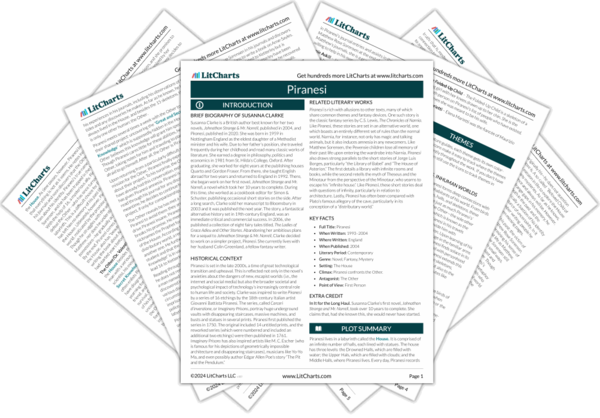Reading his journal entry on Stanley Ovenden, Piranesi finally acknowledges his amnesia. The handwriting is clearly his, and yet the world described in the entry—a world which he obviously used to be familiar with—is one which he has no memory or knowledge of. Confronted by this, Piranesi has no choice but to accept that Other was right all along. Equally if not more concerning than the fact of his amnesia, is the nature of the memories: the journal on Stanley seems as though it were written by a different person in a different world. And for that matter, the entry describes mysterious disappearances, if not kidnappings—raising questions again about how, exactly, Piranesi ended up in the House, and if he himself was abducted.
